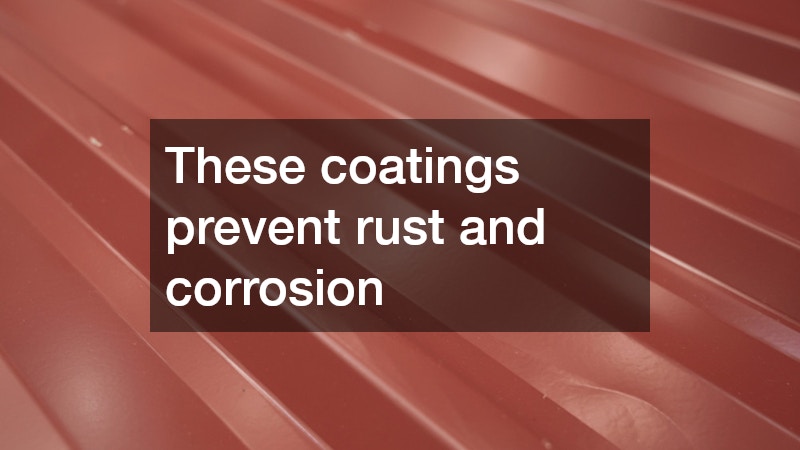Metal roofs have surged in popularity, becoming a preferred choice for homeowners seeking durability, aesthetics, and long-term savings. The trend toward metal roofing is driven by its numerous advantages, including superior longevity, exceptional resistance to weather elements, and a wide range of styles to suit different architectural designs. Roofing companies often recommend metal roofs not just as a utilitarian component of a home, but as a distinctive feature that enhances the overall aesthetic appeal while adding significant value.
Different Types of Metal Roofing Materials
Metal roofing materials have evolved over the years, offering various options to homeowners. The most commonly used materials include steel, aluminum, copper, and zinc.
Steel roofs, often coated with a protective layer of zinc or a mix of zinc and aluminum, are known for their strength and durability. Aluminum, on the other hand, is lightweight and resistant to rust, making it ideal for coastal regions where saltwater exposure is a concern.
Copper has long been revered for its beauty and unique patina, evolving visually over time even while maintaining its integrity. It is a durable material, albeit at a higher price point compared to others. Zinc is another high-end option, prized for its natural self-healing properties and the development of a protective patina as it ages. Each of these materials brings a distinct benefit, catering to different preferences and needs.
Roofing companies often guide homeowners through these options, helping them choose the best material based on climate, budget, and aesthetic goals. The selection of metal roofing materials extends beyond just functional aspects. Homeowners also consider the material’s impact on the environment. Many metal roofing materials are recyclable, and they contribute to a home’s energy efficiency by reflecting solar energy, thereby reducing cooling costs in warmer months. This eco-conscious aspect makes metal roofs appealing to a broader audience concerned with sustainability.
Durability and Weather Resistance: What to Expect
The durability of metal roofs is its most significant advantage. Unlike traditional roofing materials such as asphalt shingles, metal roofs can withstand harsh weather conditions. They are designed to resist wind, rain, snow, and even hail. In fact, many metal roofs are rated to withstand winds of up to 140 miles per hour, offering peace of mind for homeowners in storm-prone areas.
Roofing companies often highlight that metal roofs are also highly fire-resistant, providing an additional layer of protection for homes located in wildfire-prone regions. This non-combustible property can significantly lower insurance premiums, adding a financial benefit to the safety advantages. Additionally, the interlocking panels provide extra rigidity, which helps in maintaining their integrity over the years without requiring frequent repairs.
Advanced technologies and coatings applied to metal roofs further enhance weather resistance. These coatings prevent rust and corrosion, ensuring longevity. Special pigments in the coatings can also reflect solar heat, reducing heat gain and ultimately lowering cooling costs in summer. This capability can lead to significant energy savings over the roof’s lifespan, contributing to its overall cost-effectiveness.
Popular Styles and Colors to Match Your Home’s Aesthetic
One reason for metal roofs’ increasing popularity is their aesthetic versatility. They are available in a wide array of designs, textures, and colors, allowing homeowners to customize their roofing to match their home’s architectural style. From standing seam designs to corrugated panels and metal tiles, there is a style to suit every preference, whether traditional or modern.
Roofing companies often emphasize the importance of color selection as another fun aspect of choosing a metal roof. With options ranging from earthy tones to vibrant hues, homeowners can select a color that complements their home’s exterior and surroundings. Special coatings and surface treatments ensure that these colors remain vibrant and resistant to fading despite prolonged exposure to the elements.
Beyond traditional finishes, manufacturers now offer textured finishes that mimic the appearance of wood shakes, slate, or clay tiles, providing the look of classic materials with the durability of metal. This level of customization allows homeowners to maintain their home’s character while enhancing its longevity and performance with modern roofing technology.
Cost Considerations and Long-Term Savings
When evaluating the cost of installing a metal roof, it’s important to consider both initial costs and long-term savings. While metal roofs generally have a higher upfront cost compared to asphalt shingles, they offer substantial savings over time through reduced maintenance, lower energy costs, and increased longevity. With a lifespan of 40 to 70 years, a metal roof often pays for itself through longevity alone.
The initial investment may be higher, but the reduction in repair and replacement costs offsets this expenditure. Metal roofs require minimal maintenance compared to other roofing options. Furthermore, their energy efficiency helps reduce heating and cooling costs, providing ongoing savings. This is especially advantageous in regions with extreme temperature variations.
Another factor adding to metal roofs’ financial appeal is the potential rise in property value. Many homebuyers view metal roofs as an investment due to their durability, energy efficiency, and modern appeal. A home with a metal roof can attract higher offers and better marketability for a return on investment should the decision to sell arise.
From their impressive durability and weather-resistant properties to the versatile styles and colors available, metal roofs offer a unique blend of functionality and aesthetics. Additionally, the long-term financial savings and increased home value make them an attractive option for those looking to enhance their property.
Before making a decision, homeowners should consult trusted roofing companies for valuable insights and recommendations tailored to individual homes. This ensures that the chosen material not only complements the home but also meets all performance expectations. Experienced roofing companies play a crucial role in helping homeowners navigate options and select the best solution for their specific needs.




